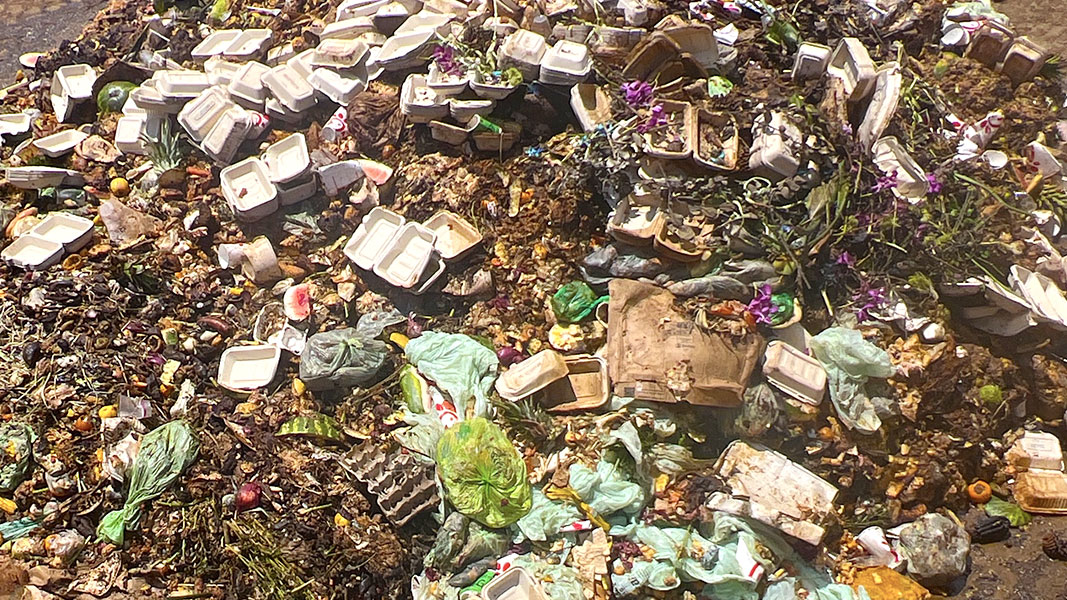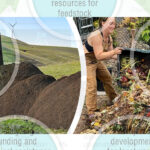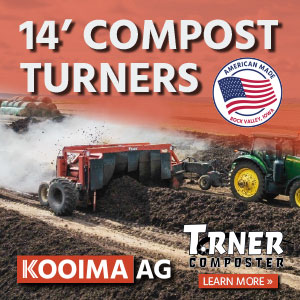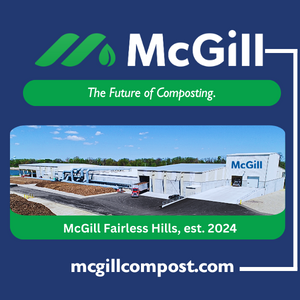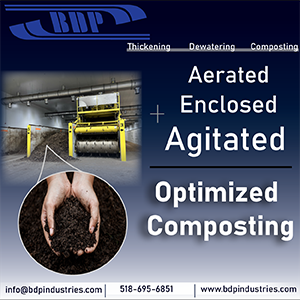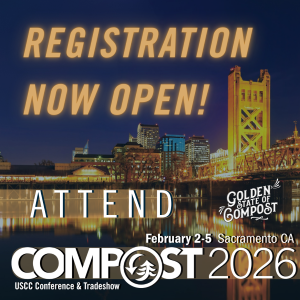Top: Certified compostable packaging does break down in industrial composting facilities, note the letter signatories who have been composting this material for over a combined 70 years. Photos courtesy of CompostNow
 David Paull
David Paull
If you’re a composter with concerns about compostable packaging, it’s understandable. These materials present unique challenges. However, it’s important to consider them within the bigger picture of waste reduction and environmental impact. Composting plays a vital role in sustainability, but it doesn’t operate in isolation. Our broader goal is to return more organic matter to the soil while supporting viable jobs and businesses that contribute to both economic and environmental success.
Diverting more organic waste from landfills is essential, as are shifting cultural habits and rethinking key components of the food supply chain. Packaging is a major part of this equation: 70% to 80% of food sold to consumers is highly processed and packaged, and food and packaging/containers together make up 45% of U.S. landfill waste. With microplastics now found in our soils, air, water, and even our bodies, there’s a clear need for a more regenerative approach.

As with any feedstock, the processing of compostable products can be optimized through design and equipment. This holds true for CompostNow’s new facility in Grantville, Georgia (above).
Transforming supply chains into circular systems that function more like natural ecosystems is a crucial step toward solving this problem. Enter compostable packaging. Made of rapidly renewable resources, when composted, the packaging is turned into carbon dioxide (CO2) and organic matter that gets returned back to the soil. So what is the push back we are hearing and seeing among other composters about compostable packaging? In a nutshell:
- It doesn’t break down/causes operational headaches for composters including increased cost
- Threatens human and environmental health
- Can’t sell the finished compost product to organic producers if it has compostable products in the mix
- Compostable packaging causes contamination
- Hurts finished compost sales
The signatories of this letter (see Box) joined together to address this push back. BioCycle is publishing their letter in its entirety.
Let’s Unpack This
While every composter has the right to decide what they choose to accept and compost, and no one compost system is the same, the way these sentiments are being presented to the marketplace is harmful for the overall mission of this work. Unpacked further below:
- “It doesn’t break down.” Certified compostable packaging does break down in industrial composting facilities. As composters who have been composting this material for over a combined 70 years, we can assure you of that. As with any feedstock, the processing of compostable products can be optimized through design and equipment. This does not mean there aren’t cheap look-alikes and bad actors greenwashing packaging to look “compostable.” Testing requirements (required by certifying groups like the Biodegradable Products Institute (BPI)) for compostable packaging have only become more professional over the past 20 years.
- “It’s unsafe or toxic” Certified compostable packaging does not use harmful chemicals such as PFAs for any part of the products. Certifying groups like BPI, TUV, and CMA have strict guidelines for this. For example, the BPI Certification Scheme states that organic fluorinated chemicals, such as per-and polyfluorinated substances (PFAS), cannot be present in formulas for BPI Certified items.
- “Can’t sell to organic growers.” Finished compost that was produced with compostable packaging currently cannot easily be sold to organic producers and this is a barrier to some composters wanting to accept these materials. Other composters that sell into both the organic market and the non-certified organic market have successfully, and without major difficulties, created processing areas at their composting sites to meet both market sectors. The reasons for these materials not being accepted by the U.S. Department of Agriculture’s National Organics Program (NOP) and its advisory board are due to these being novel materials that are trying to fit within an outdated system. There hasn’t been a technical review to add more materials like this since the 1980s. It is our opinion that third party certified compostable products should be accepted in the USDA’s NOP’s Inputs Requirements for OMRI-listed compost because compostable products are derived from plant-based materials.
- “It causes contamination.” Contamination is a serious issue for composting facilities that causes a lot of operational headaches and cost. Compostable packaging does not cause contamination. To the contrary, a study done by Compostable Chicago in 2022 found that contamination levels generally trend lower with stronger adoption of compostable foodservice items. Contamination already exists with certain generator types such as restaurants and cafeterias. Compostable packaging is a tool that can be employed to reduce specific plastic contaminants at these establishments (straws, gloves, bin liners, ramekins, etc). Compostable packaging exists to decrease the prevalence of single-use plastics, thereby decreasing the quantity of single-use plastic contamination ending up at compost facilities. However, it can be difficult for composters to differentiate between certified compostable plastics and conventional plastics in their decontamination efforts, which is why mandating standardized labeling is a critical step forward in solving this short-term operational challenge.
- “Hurts compost sales.” Any compost facility accepting pre and postconsumer food waste from public and private entities is going to have a significant percentage of single-use plastic contamination. Every composter makes their best attempt to reduce this contamination on the front end and screens out any remaining on the back end. Inevitably some small fragments of plastic make it through the composting process. If it is fragments of compostable plastic, that is not harmful and will biodegrade over time with no negative impacts other than aesthetic preferences for what “clean” compost should look like. This is not microplastic pollution. Any composter that believes they don’t have plastic contamination in their compost is kidding themselves and only has to look at their overs pile to see the reality.
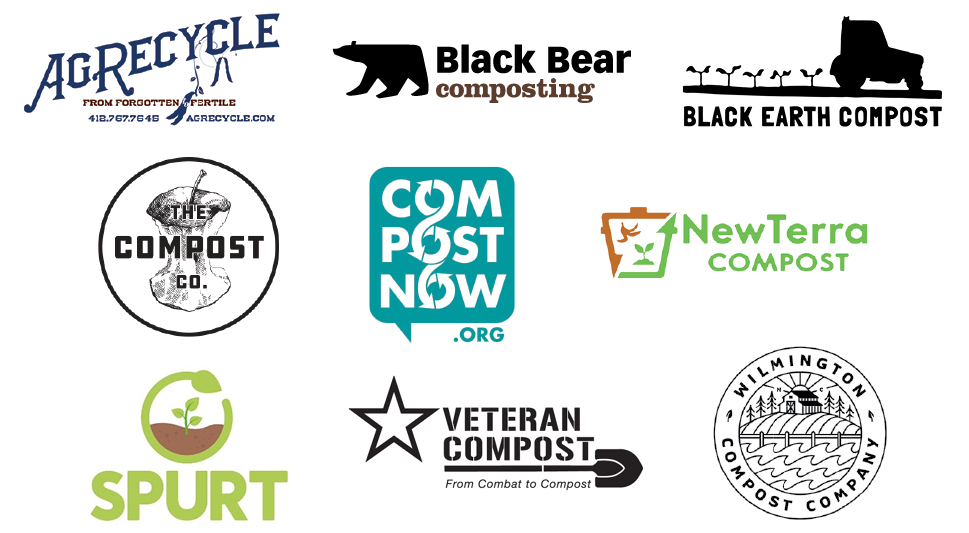
In conclusion, if you are a composter that has decided to not accept compostable products, that is okay, but the composting industry needs to be an aligned and supportive front — not pulling in two opposing directions that cause consumer distrust and confusion. If you are a consumer, municipality, or business that is now confused why you are purchasing compostable products that likely cost more, and may or may not be getting composted, don’t stop buying them. This is a speed bump along the way of the path of progress. Feel free to reach out to any of the composters who have signed on to support and broadcast this message. Support them. They are working hard to return critical organic matter to our soils, build regenerative food systems, and support thriving local economies.
David Paull is Chief Impact Officer at CompostNow, and lead author of this Compostable Packaging Letter. He is the primary contact for this initiative. Other contributors are Justen Garrity, Veteran Compost; Carla Castagnero, AgRecycle; and Andrew Brousseau, Black Earth Compost.


